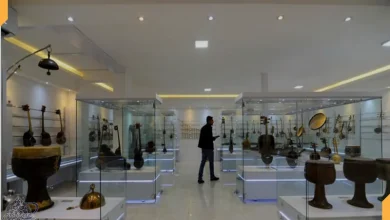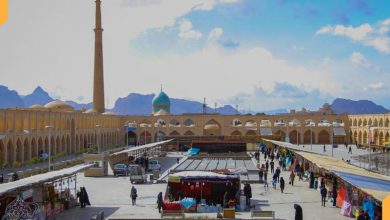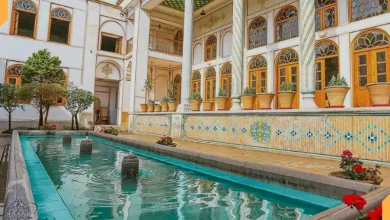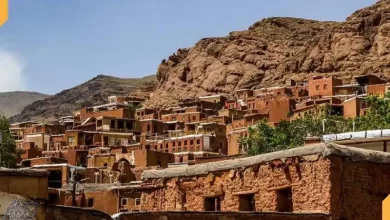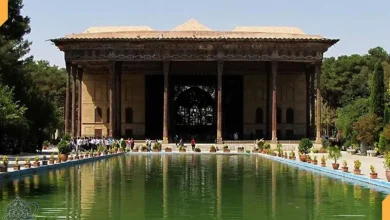Lut Desert (Dasht-e Lut)
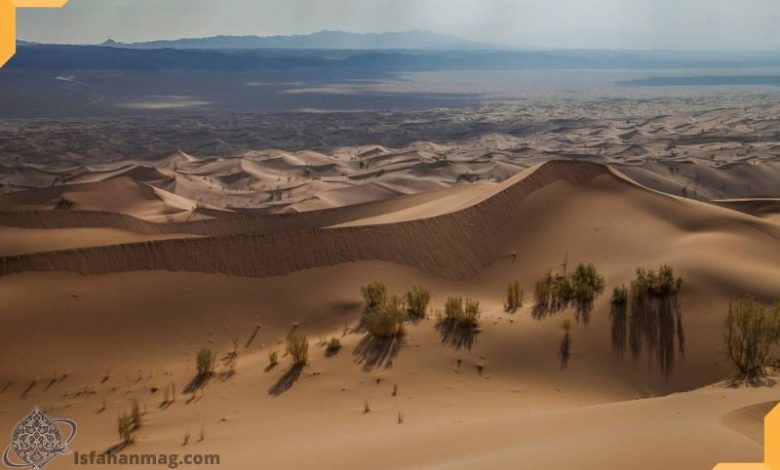
“Lut Desert” or “Dasht-e Lut” is a vast desert that includes nearly 10% of Iran’s area.
This desert is considered as one of the humid and hot regions of the world that has 120,000 km wide.
This region is full of unknowns. It has been a long time that stab hole of “Gandom Beryan” that is located near this desert, has been considered as the “hottest spot of earth” and of course, in false belief, some people thought that it is the biggest desert in the world.
This desert is so attractive and mysterious that it is recorded as the first natural work of Iran on the World Heritage List of UNESCO.
Tune on to get familiar with this desert.
More about Lut Desert
Lut Desert is located in the south east of Iran and it is towing the title of “the most pristine spot of Iran”.
“Lut” in the Balouchi langue means thirsty, barren, and empty of everything and it is equal to the word “Lat” that with a little exaggeration, describes the characteristics of desert areas.
Most part of this giant desert is consisting of sand and sabulous. Other parts of it have desert geographical.
Where is Lut Desert (Dasht-e Lut)?
Lut Desert is a wide range that it involves parts of three broad provinces of Sistan va Balouchestan, Khorasan-e Jonoubi, and Kerman.
This ardent and poorly understood area that is extended from north to south, is limited from the west to the “Nay Band” fault and from the east to the “Nahbandan” fault.
About 70% of this wide desert is located in Kerman province and 30% remained in the provinces of Khorasan-e Jonoubi and Sistan va Balouchestan.
Different parts of Lut Desert
This desert is considered a mostly low area that due to its height and geographical characteristics is asymmetrical.
Hence, due to the shape of the bumps and dispersion of geographic complications, geologists divide it into 3 parts:
Northern Lut
It is in the range of Khorasan Jonoubi province and near Birjand and it is also known as “Lut-e Khorasan” and “Lut-e Birjand”. It is considered a gravel and sandy region.
Central Lut
It is the most different part of this desert also known as “Chale Lut” and covered with huge and interconnected sandy lumps.
Southern Lut
This part is more productive due to vegetation and remained works of ancient civilizations.
It involves parts of Kerman province and north of Sistan va Balouchestn and according to geomorphology, it divides into three individual parts:
- Dasht-e Sar: this region is covered with big and small stones; it leads from west to Kalout and Kaloutak, from north to Shahdad to Nahbandan communication path.
- Kalout: it’s a local expression that refers to deep ditches and massive sandy pyramids that have emerged due to soil erosion and assign as a unique phenomenon in the world.
- Sandy Hills: it’s in the eastern part of central Lut and in a region with the extent of 50 thousand hectares that is covered with sandy hills.
Does Lut Desert consider the hottest region of earth’s sphere?
Temperature is a relative and variable phenomenon and undoubtedly, attributing the title of “hottest spot of planet earth” to a place is not simply possible. There are many reports about this issue, but they are not proven by scientific resources.
Parviz Kardavani, famous geographer, claims that they the central hole of Lut Desert that is located in 75 km of the east of Shahdad, is the hottest spot of earth.
Anyway, a similar temperature was reported by the Modis satellite from the years 2004 to 2009 in this desert attributing it to the region of “Gandom Beryan”.
Totally, the compounds of iron on earth’s level and black sands of this desert in comparison with other regions are the reason for its high temperature.
Although, the blowing 120 days winds of Sistan in summer are also the reason for the stabilization and adjustment of temperature in this region.
Vegetation and fauna of Lut Desert
It doesn’t seem that be any vegetation and fauna in the central parts of the Lut Desert, but on some days of the years that the weather condition is more favorable, we can observe temporary living;
for example, in the spring season, grass plants grow in the Dasht-e Sar region after limited seasonal rains and they burn and get dry in a short time.
Rig Yelan region includes different species of sand-friendly plants.
One of the most different landscapes that we can observe in this desert is “Nabaka” or sandy vases.
This amazing phenomenon is considered one of the unique attractions of this desert.
Bigger cases also exist in the Lut Desert that are seen at a few points on earth.
There are animals that are resistant to dehydration.
We can refer to scavenger birds, foxes, etc and nearly 70 species of birds are being observed in this desert that the common point of all of them is their white color to attract less heat.
Secrets of Lut Desert
Kalouts that are existing in the margin of Shahdad is full of mysteries.
Some people say that this place is the cursed city of the Lut nation that was turned to stone and the appellation of this desert is this issue.
Some parts of Kalout doesn’t see the human’s footprint and full of secrets, but around these Kaluts and there are works of ancients civilizations that belong to 3000 years BC were found in other marginal areas of this desert and Shahdad that we can refer to stony dishes.
In a region named “Zangi Ahmad”, where there is not any sign of life, ruined monuments are seen and some colorful glasses and broken pottery had been discovered.
Central Lut has a close connection with supernatural stories. It is being said that a fossil of a dinosaur’s nail was discovered in this desert.
Entertainments of Lut Desert:
- Safari and motor-riding
- Camel- riding
- Walking and photography
- Observing the sky at night
- Residence in the margin of Lut Desert
- Shahdad camp: capacity of 40 people
- -Setare eco camp: capacity of 80 people.
FAQ
Which desert towing the title of the most pristine spot in Iran?
Lut Desert.
Which is the most different part of this desert?
Central Lut.
Can you name some entertainment in this desert?
Safari and motor-riding
Conclusion
The important reason the Lut Desert is unknown is due to its extreme poverty of vegetation and not having food resources and also fierce storms.
This issue caused that we don’t have enough information, map, and pictures of the central parts of this desert and also become a dangerous place.
Have you ever visited the Lut Desert?
How many days did you reside in its margin? Share your experiences with us…


